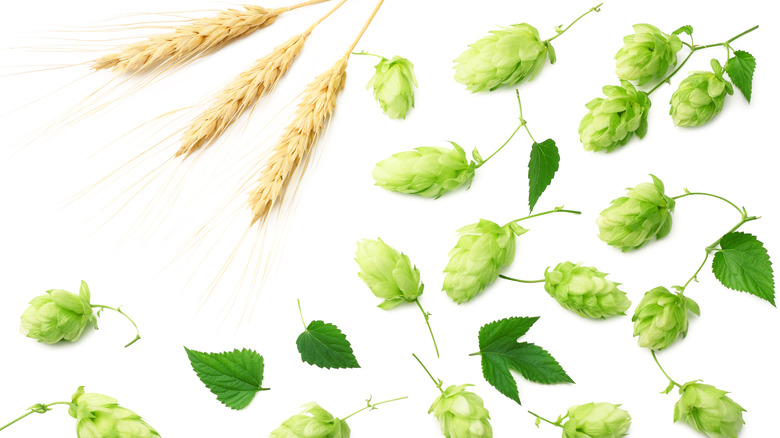The 9,000-Year-Old Beer Discovered In China
Ah... beer. What could be finer than a pint of cold, frothy beer after a hard day's work? Stroll into a pub, peruse the taps, make your choice, sit and chill. But before you go thinking that enjoyment of consciousness-altering beverages begins and ends with Pabst vs. micro-brewed craft options, it's important to remember that humans have always drunk, smoked, and generally gotten high. The advent of agriculture some 12,000 years ago, roundabout the end of the last Ice Age, inevitably led to agricultural experimentation. And what else do we need for beer but crops like barley, wheat, or rye?
Many in the West are familiar with the image of beer-guzzling monks from medieval times, largely because monks remained the sole keepers of the art of beer brewing from 476 C.E. to the beginning of the Renaissance, as Alcohol Problems and Solutions cites. All the way back to 9,000 B.C.E., though, at the ancient feasting-and-gathering site Gobekli Tepe in modern-day Turkey, there's evidence of giant beer cisterns, as the Gobekli Tepe archeological blog says. That's an extremely short time-period after the end of the Ice Age — 11,000 years ago — and very quickly after humans started to shift from hunting and foraging to farming and domestication.
And now, we have further evidence of our ancestor's preoccupations, as Smithsonian Magazine tells us. At the Qiaotou archeological site near Zhejiang, China, along the China Sea, we've got the remains of beer made from tubers, a grain called "Job's tears," rice grains, and rice husks.
Coping with the loss of loved ones in the Neolithic Age
The beer discovered at the archaeological dig site in Qiaotou, a huge rice-growing region to this day, didn't really resemble any kind of modern-day, highly manufactured ale or lager you might find in a cask or keg. It was a "slightly fermented and sweet beverage ... probably cloudy in color," as Smithsonian Magazine says. Remains of yeast, mold, starches, and "fossilized plant residue" were found in long-necked, decorated hu pots that resemble nothing else found in any other site from the time period, as the Independent says. The pots, 50 altogether, perfectly intact, were located on an elevated mound surrounded by a man-made ditch.
Jiang Leping, a researcher with the Zhejiang Provincial Institute of Cultural Relics and Archaeology, stated, "This place might have been a venue for sacrificial and ceremonial events of the ancient residents." This conclusion was echoed by researchers on Science Alert, who suggested pots were placed on a burial mound of some kind, as two skeletons were found nearby. Not to get too anachronistic, but this does conjure to mind images of people drinking to cope with the death of a loved one, for better or worse, perhaps at a wake. As for the find's uniqueness, the dig team admits that the creation of fermented beverages might have been accidental.
In the end, as The Atlantic puts it, the "playful, trusting, childlike state" induced by alcohol has formed a part of humanity's fundamental social glue for millennia.

